If you see air mold collecting at the top of the tank or algae collecting in different parts of the fish tank, then you need to clean your fish tank as soon as possible.
Your precious tiny fishes are susceptible to diseases if they stay in that tank and water for a long time. You do not need to worry, as mold growth is a common thing that happens because of the environment’s moisture level. Let us look at the correct way to clean a tank that won’t harm the fishes.
Contents
Step-By-Step Guide To Clean The Fish Tank
You need the following items in order to clean your fish tank:
- An aquarium siphon
- Fishnet
- Toothbrush
- Two large containers
- Glass/ algae scraper
- Sponge
- Paper towel (chemical-free)
- Water clarifier
- A replacement filter cartridge
- Hot water
- Vinegar
1. Displacing the fishes
Open the mold-infested lid and keep it away from the fishes. Take a bucket and fill it with water, do not use tap water.
This water is where your fishes will stay until you clean their tank. With a fishnet, transfer the fishes from their tank into the bucket.
2. Siphoning the water
Now that the fishes are out of the way, you can start removing the tank’s parts. Gently siphon the water with your aquarium siphon help and empty the tank.
If you notice that the tank is not that much infested, you can keep 10 percent of the water as a healthy bacteria. If you feel the need to empty the tank, then, by all means, empty the tank. Try to discard the water somewhere safe, like your sink or away from the house.
3. Disassembling the tank
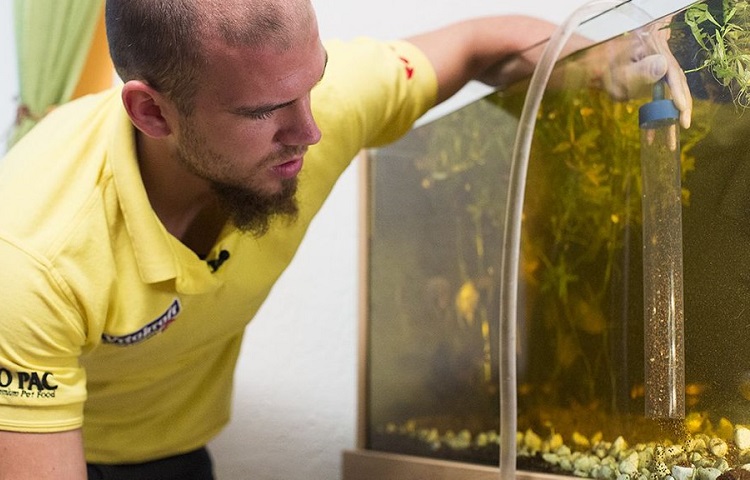
You can start disassembling the contents of your fish tank with care. These contents will generally be infested with mold, so you must clean each ornament personally.
Remove the pebbles and place them in a colander. The rest of your decorations should be in a bucket or bowl.
4. Cleaning everything
Lid
- Mix clean water and vinegar in a 1:1 ratio and fill it in a spray bottle.
- Go to your tank’s top and start spraying the mixture generously.
- Let it sit for 5 minutes and wash it off with hot water.
- Continue this step twice to get rid of all the mold.
- If necessary, you can scrub the lid to make it extra clean. Ensure that you have thoroughly washed the entire lid as a single spot of a chemical can be harmful to the fishes.
Décor
- Take your pebbles and run them through hot water for few seconds.
- Use your hands for scrubbing the rocks to remove all the mold.
- Avoid using any disinfecting product as this décor gets in touch with the fish. Your pebbles shall be squeaky clean after few rinses.
- To wash the rest of the décor and fake plants, you can use a toothbrush to get rid of any surface mold. A clean toothbrush will come in handy for cleaning hard-to-reach places.
- If your décor is sturdy and microwave safe, you can sterilize it by boiling it in a saucepan for a minute. This sterilization will be an additional step to ensure the décor is clean.
Tank
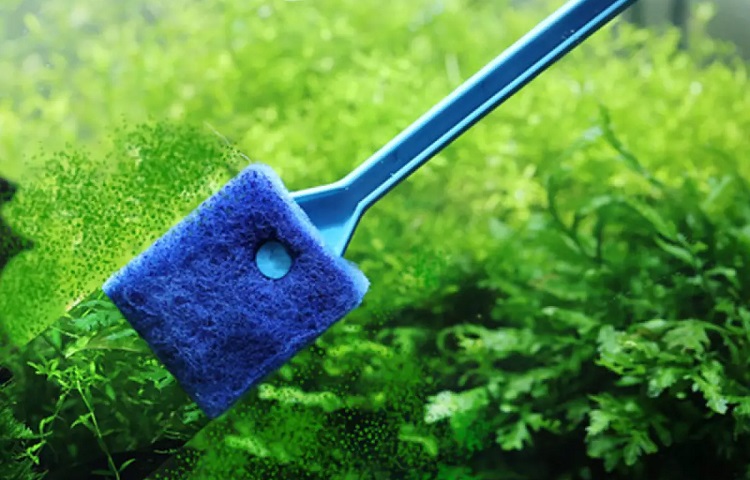
- Use a glass/ algae scraper to scrape away the mold in a fish tank.
- Clean the inside without using any cleaning agents. Once you have scraped away the extensive areas, you can use a toothbrush to scrub the inner corners and extra infested areas.
- Use your chemical-free natural tissue paper and wipe the scraped and brushed gunk from the tank.
- Rinse the entire tank with hot water and keep siphoning it till the water runs clear.
- Use the vinegar mixture to clean the outer surface of your tank. Your aquarium tank is now clean from all the mold and algae.
5. Setting up the tank
Replace your filter cartridge and rinse the filter with hot water. Slowly arrange the tank’s décor back in its original place.
Start refilling the water tank with water (avoid tap water) and add water clarifier and dechlorinating treatment to your tank.
- Dechlorinating
This process will protect your fish from any amount of chlorine in the new replacement water.
- Water clarifier
Your water clarifier will dissolve all the excess substances contributing to the overgrowth of harmful bacteria and fungi.
6. Placing the fishes back
Gently scoop your fish and place them in their clean fish tank. Don’t forget to say “welcome back!”
Fish Tank Maintenance Tips
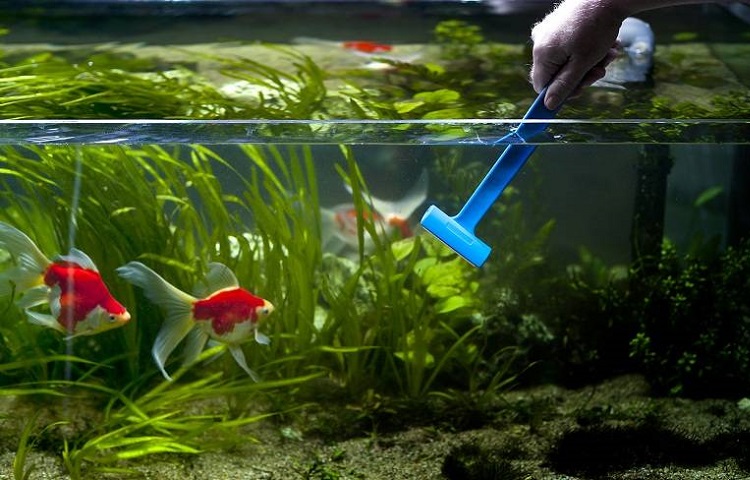
- Clean approximately ten percent of your fish tank’s water to prevent mold growth.
- Avoid overfeeding as excess food will accumulate in the tank and speed up the process of mold growth.
- Wash the lids as air-borne molds stick to that part of the tank, which people primarily ignore when cleaning the tank.
A bonus tip
To keep mold and algae under control, you can add suckerfish and snails to your fish tank. Snails like freshwater aquariums while suckfishes like a tropical aquarium.
Fish Tank Mold Types
Five types of mold can appear in your fish tank- green fungus, black fungi, black beard algae, white fungi, algae.
1. Green fungus
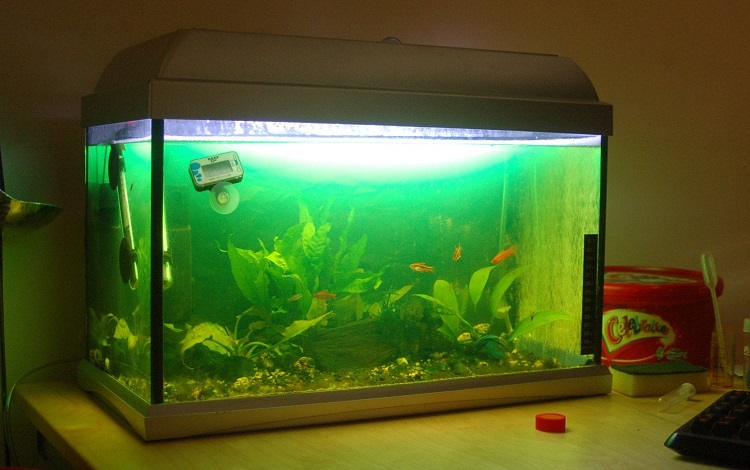
The green fungus appears when the water condition of the tank of poor. Nutrient deficiency promotes green fungus’ growth.
Solution
Try providing several food nutrients to your fishes. You need to replace your tank’s water regularly every three days to avoid growing mold in the tank.
2. Black fungus
The black fungus appears on your tank due to an excess amount of leftover food. Sometimes, increased levels of phosphates also instigate black fungus’ growth.
Solution
Remove the toxic food materials from your tank. Keep an eye on the phosphate level in the water.
3. Black beard algae
Black beard algae are also known as red algae. The algae appear with increased levels of phosphates.
Solution
Replace the water in the tank with clean water. Try to clean the siphon inside the tank and purify the tank’s freshly added water.
4. White fungi
White fungi appear due to substandard water. Another reason for their appearance is the open wound of your fishes. The fungi thrive on injuries and skin particles floating in the water.
Solution
You need to clean the tank with clean water and remove excess food floating in the water. Treat your fishes’ wounds and wrap the infected area to avoid the growth of white fungi.
5. Algae
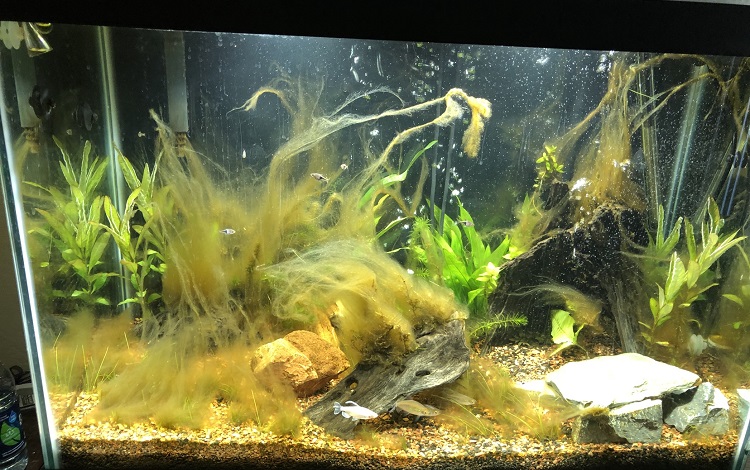
Nutrients, water, and light are the main reasons for algae’s growth in your fish tank.
Solution
Try adding algae-eating fish to your aquarium. Always clean your tank and avoid direct sunlight. We recommend that you try to keep artificial lights in your tank.
Reasons Behind The Growth Of Mold In Your Aquarium
Mold in the fish tank can occur for several reasons, be it unclean water or nutrient imbalance.
Let us look at the most common culprits that help the growth of mold in your aquarium.
1. Extra feed
All fish owners want their fishes to be healthy, and for that, they try to overfeed their fishes. The fishes eat as much as possible, and the rest of the food gets accumulated in the tank’s base.
The extra food collected in the end makes phosphorus fumes, and mold grows because of these fumes. These fumes are incredibly harmful to the fish too.
2. Décor
Having brightly colored decorative items lift the tank’s look and makes your fishy happy but pay attention if you have live plants in the aquarium.
Plants in a fish tank require replacement every few weeks. When the plant starts dying, the oxygenation process gets extremely slow.
The tank’s environment level reaches the stage where you can see black or brown mold on the corners and tank’s surface areas. These harmful materials increase ammonia, which aids these molds’ growth.
3. Light
Fungi love light, especially natural sunlight. If you place your aquarium in direct sunlight, the temperature and tank become suitable for the algae and mold to grow inside the tank.
The generation occurs at the top corners of the tank. Try placing the tank away from the sunlight and opt for artificial light to avoid this.
4. Cloudy water
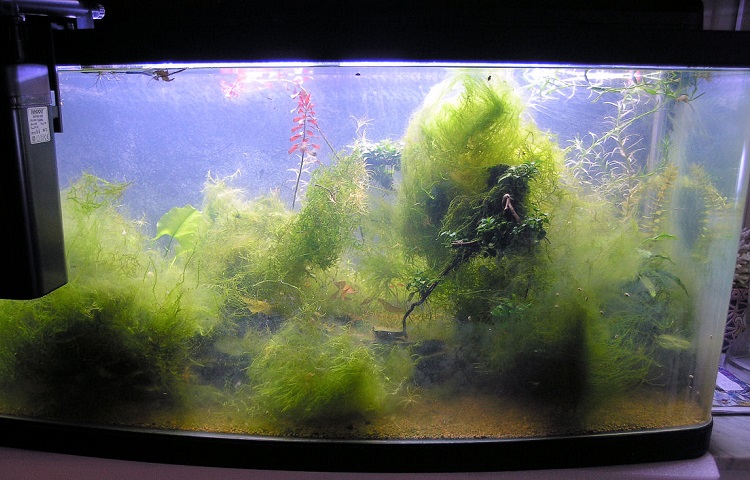
If you do not clean your tank, the tank will start looking cloudy because of the excrements, food particles, and other debris in the water tank.
This environment is a perfect living condition of mold, and they start proliferating in such situations. Several molds are so harmful that you might need to change the tank altogether.
So cleaning before the thing takes a turn for the worse is the sane thing to do.
5. Delayed changing water
If you avoid changing a fraction of water every week, nitrates will accumulate in the tank. The high amount of nitrates are an invitation to algae as it feeds on nitrates.
The Bottom Line
That was our step-by-step guide on cleaning mold-infested fish tanks.
One key point to always remember is to avoid using any detergents and chemicals while cleaning the entire tank. Try using hot water to help dissolve the mold.
If the tank is seriously infested and you couldn’t clean it, consider buying a new one. We hope our article on deep cleaning your mold was helpful to you. Happy cleaning!

Ian Sterling, founder of Fishlab.com, began his aquarium journey over 30 years ago, driven by a deep fascination for fish and their diverse personalities. His website, Fishlab.com, is dedicated to making fishkeeping accessible and enjoyable, offering beginner-friendly guidance, expert insights, and a community for aquarists to connect and share experiences.


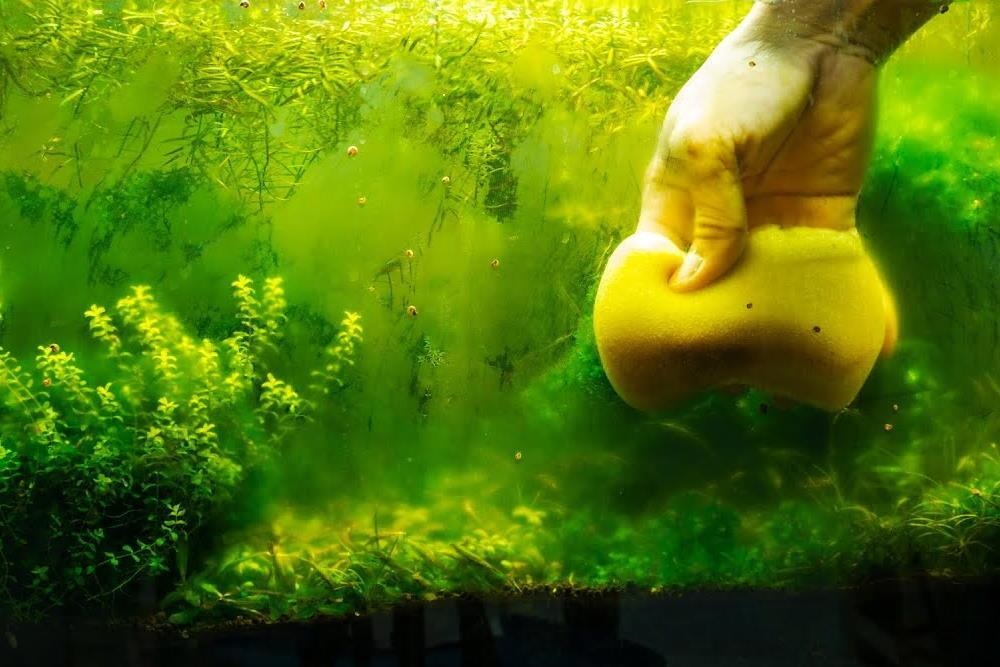
Comments (1)
Thank – you for your help ….. Kevin